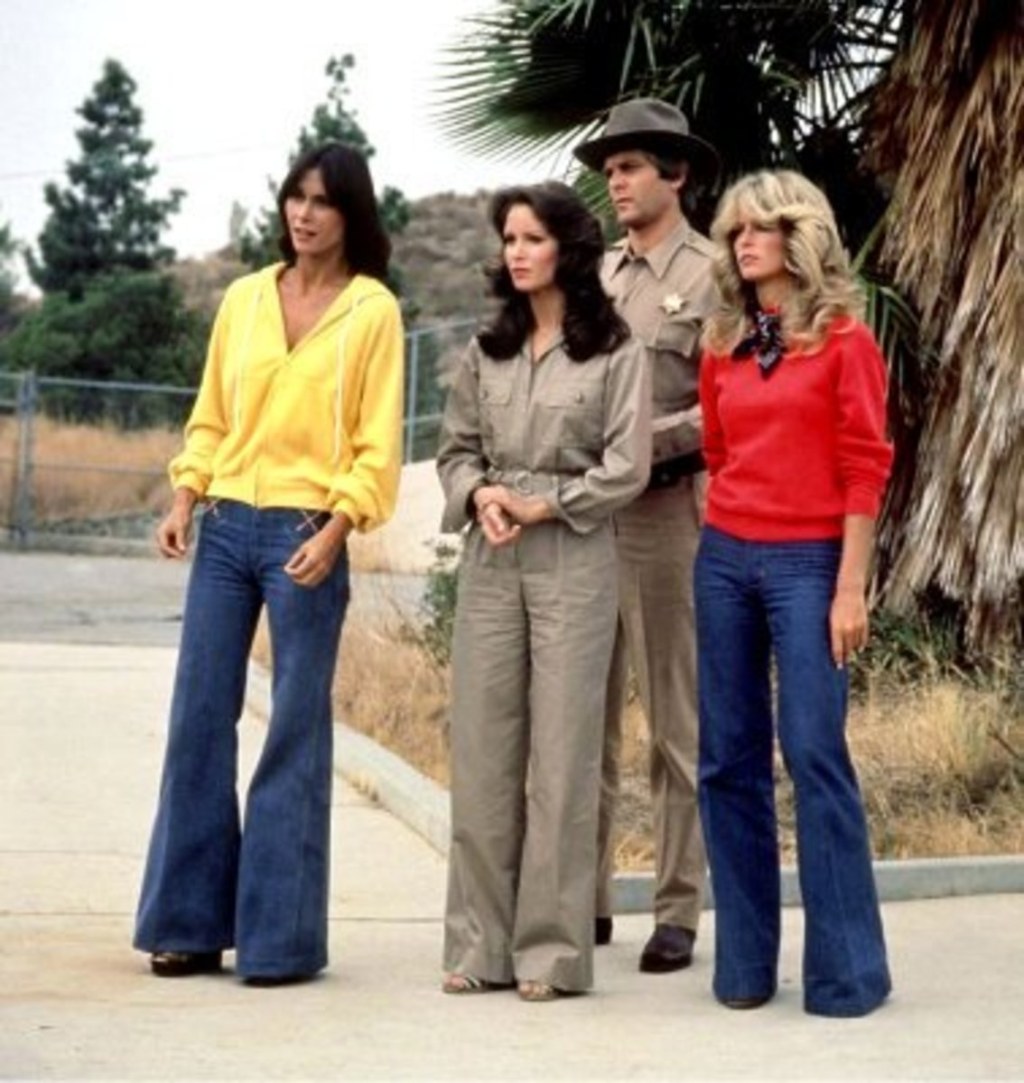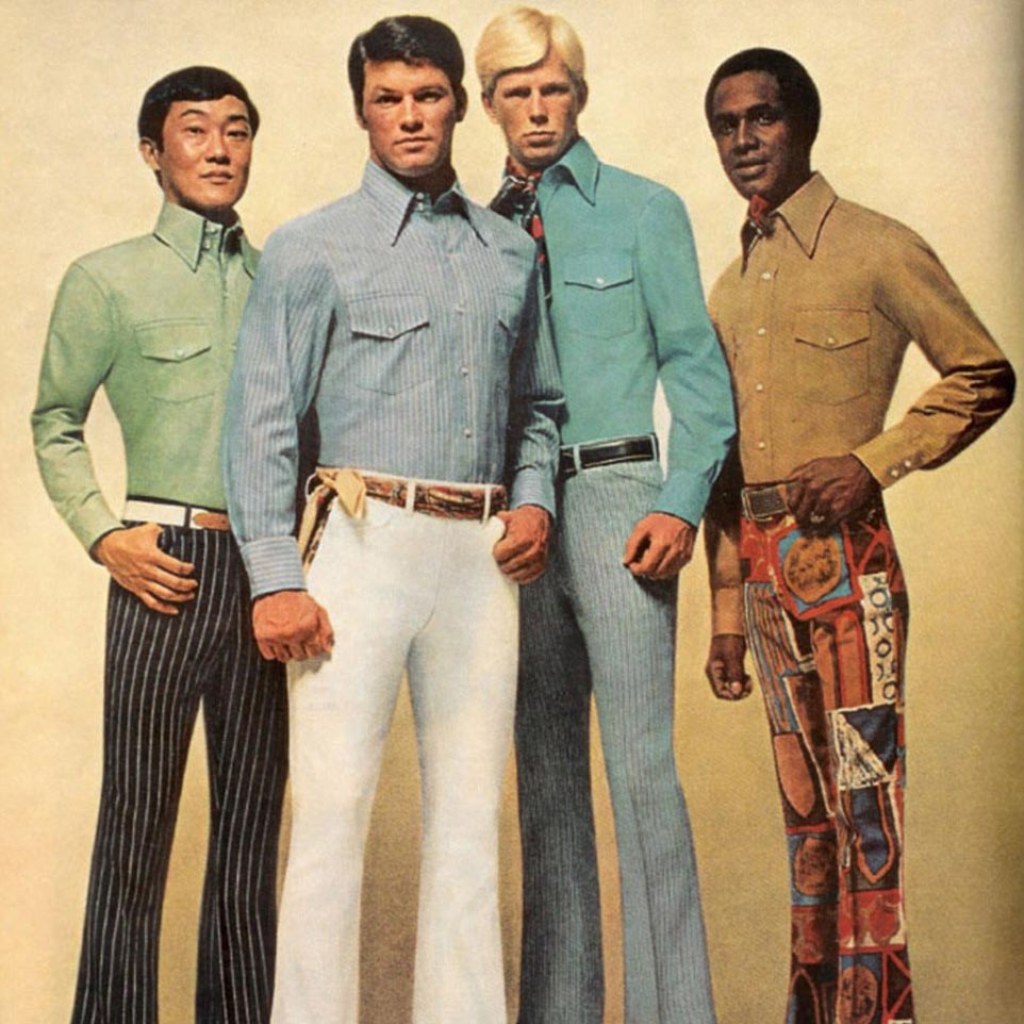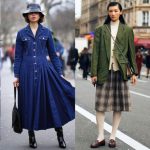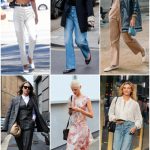Revive Your Style: Uncover The Iconic Fashion Trends Of The Late 70s And Rock Your Wardrobe Today!
Fashion Trends of the Late 70s
Greetings, Readers! In this article, we will take a trip down memory lane to explore the fashion trends that dominated the late 70s. This era was known for its unique and iconic styles that still inspire designers today. Join us as we delve into the fashion world of the late 70s and discover the trends that shaped the decade.
Introduction
The late 70s marked a turning point in the fashion industry, as it witnessed a shift towards individuality and self-expression. This was a time when people embraced bold and vibrant styles, breaking away from the conservative clothing norms of previous decades. The fashion trends of the late 70s reflected the changing social and cultural landscape, with various subcultures emerging and influencing the fashion scene.
2 Picture Gallery: Revive Your Style: Uncover The Iconic Fashion Trends Of The Late 70s And Rock Your Wardrobe Today!


During this era, fashion became a powerful means of self-identity, allowing individuals to showcase their personality and beliefs through their clothing choices. The late 70s saw the rise of disco culture, punk, and the hippie movement, each leaving its mark on the fashion trends of the time. Let’s delve into these trends and explore what made them so iconic and popular.
1. Disco Fever 🕺
The disco era of the late 70s was all about glitz and glamour. It was a time when people enjoyed dancing the night away in flashy outfits and sparkly accessories. Disco fashion was characterized by bold colors, shiny fabrics like polyester and lurex, and statement pieces such as bell-bottom pants and platform shoes. Popular disco attire included sequined dresses, satin jumpsuits, and wide collared shirts. This trend embodied the spirit of fun and liberation that defined the disco era.
2. Punk Rebellion 🤘
Punk fashion emerged as a rebellious response to the mainstream culture of the late 70s. It was characterized by its unconventional and edgy style, often incorporating ripped clothing, band t-shirts, and leather jackets. Punk fashion also embraced DIY elements, with individuals customizing their clothes with safety pins, studs, and graffiti-inspired designs. This trend was a symbol of youthful rebellion and a rejection of societal norms.
3. Hippie Revival ✌️

Image Source: saymedia-content.com
The late 70s saw a revival of hippie fashion, which had originally gained popularity in the 1960s. This trend was all about embracing a free-spirited and bohemian lifestyle, with flowing maxi dresses, floral prints, and fringe details. Natural materials like cotton and hemp were preferred, reflecting the hippie movement’s focus on sustainability and environmental consciousness. The hippie revival in the late 70s represented a longing for peace, love, and connection with nature.
4. Power Dressing 💼
Power dressing became prominent in the late 70s as women sought to break into the professional world and assert their authority. This trend was characterized by tailored suits with broad shoulders, emphasizing a strong and empowered silhouette. Women embraced blazers, wide-leg pants, and high-waisted skirts, often paired with bold accessories like oversized belts and statement jewelry. Power dressing was a symbol of women’s increasing presence in the workforce and their determination to succeed.
5. Casual Chic 😎
The late 70s also witnessed the rise of casual chic fashion, which aimed to strike a balance between comfort and style. This trend embraced relaxed and effortless looks, with denim becoming a staple fabric. Flared jeans, denim jackets, and jumpsuits were popular choices for a laid-back yet fashionable ensemble. Casual chic fashion was a departure from the formality of previous decades and represented a more relaxed approach to dressing.
6. Avant-Garde Experimentation 🎨
As the late 70s embraced individuality, avant-garde fashion emerged as a platform for artistic expression. This trend pushed boundaries and challenged traditional notions of clothing. Avant-garde designers experimented with unconventional materials, asymmetrical cuts, and abstract shapes. Their creations were often showcased in avant-garde fashion shows or worn by trendsetters who dared to be different. This trend celebrated creativity and blurred the lines between fashion and art.
What were the fashion trends of the late 70s?
The fashion trends of the late 70s included disco fever, punk rebellion, hippie revival, power dressing, casual chic, and avant-garde experimentation.
Who influenced the fashion trends of the late 70s?

Image Source: metv.com
The fashion trends of the late 70s were influenced by various subcultures, including disco culture, punk, and the hippie movement. These subcultures represented different ideologies and lifestyles, which translated into unique fashion styles.
When did the fashion trends of the late 70s take place?
The fashion trends of the late 70s took place during the latter part of the 1970s, specifically from around 1975 to 1979. This era marked a significant shift in fashion and popular culture.
Where did the fashion trends of the late 70s originate?
The fashion trends of the late 70s originated from various sources, including disco clubs, punk scenes, and countercultural movements. Different regions and cities also had their own interpretations of these trends, adding to their diversity.
Why were the fashion trends of the late 70s popular?
The fashion trends of the late 70s were popular because they allowed individuals to express their unique identities and rebel against societal norms. These trends represented freedom, self-expression, and a desire for change, resonating with many people during that time.
How did the fashion trends of the late 70s influence the industry?
The fashion trends of the late 70s had a lasting impact on the industry, inspiring designers to embrace individuality and experiment with unconventional styles. Many elements of these trends continue to influence fashion today, showcasing the enduring legacy of the late 70s.
Advantages and Disadvantages of Fashion Trends of the Late 70s
Advantages:
1. Self-expression
The fashion trends of the late 70s allowed individuals to express their unique personalities, beliefs, and identities through their clothing choices.
2. Liberation
These trends represented a sense of freedom and liberation, breaking away from the conservative clothing norms of previous decades.
3. Iconic Styles
The fashion trends of the late 70s produced iconic styles that continue to inspire designers today, showcasing the timeless appeal of these looks.
Disadvantages:
1. Exclusivity
Some fashion trends of the late 70s may have been exclusive to certain subcultures or societal groups, limiting their accessibility to a broader audience.
2. Rapid Changes
The fast-paced nature of fashion trends can lead to constant changes, making it challenging for individuals to keep up with the latest styles.
3. Lack of Sustainability
Some fashion trends of the late 70s, such as the widespread use of polyester, were not environmentally friendly and contributed to unsustainable practices in the fashion industry.
FAQs (Frequently Asked Questions)
1. Were bell-bottom pants popular in the late 70s?
Yes, bell-bottom pants were one of the iconic fashion trends of the late 70s. They were favored for their wide and flared leg style, often paired with platform shoes.
2. Did punk fashion only appeal to rebellious youth?
While punk fashion was initially associated with rebellious youth, its influence extended beyond that demographic. It became a recognized subculture with its own unique fashion aesthetic.
3. How did power dressing empower women in the late 70s?
Power dressing empowered women in the late 70s by allowing them to assert their authority and presence in the professional world. It symbolized their determination to succeed and break barriers.
4. Can casual chic fashion be worn in formal settings?
Casual chic fashion is more suitable for relaxed and informal settings. However, by accessorizing appropriately, some elements of casual chic fashion can be incorporated into formal attire.
5. Are there any fashion trends from the late 70s that are currently making a comeback?
Yes, several fashion trends from the late 70s have made a comeback in recent years. Elements like wide-leg pants, fringe details, and vintage-inspired prints are experiencing a resurgence in popularity.
Conclusion
The fashion trends of the late 70s were a reflection of a dynamic and transformative era. From disco fever to punk rebellion, each trend embodied a distinct cultural movement and allowed individuals to express their unique identities. While these trends had their advantages and disadvantages, their enduring influence on the industry cannot be denied. As we look back at the fashion of the late 70s, we are reminded of the power of self-expression and the impact it can have on society. So, embrace your own style and let the fashion trends of the late 70s inspire you!
Final Remarks
In conclusion, the fashion trends of the late 70s have left an indelible mark on the industry. It is important to note that fashion is ever-evolving, and what was popular in the past may not necessarily align with current values and trends. While we can appreciate the creativity and individuality of the late 70s fashion scene, it is essential to make sustainable and conscious choices when it comes to our clothing. Let’s celebrate the legacy of the late 70s while also looking towards the future of fashion with a commitment to inclusivity, innovation, and environmental responsibility.
This post topic: Fashion Trends

